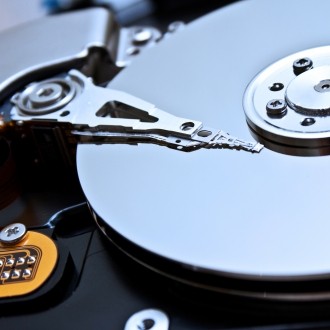Researchers in Singapore have discovered a way to increase hard drive capacity by as much as six times the current limit using sodium chloride, otherwise known as table salt. Joel Yang from Singapore's Institute of Materials Research and Engineering (IMRE) is credited with the finding.
Wired.co.uk describes the process of how a current hard drive works. The spinning magnetic platters are covered with randomly dispersed nanoscopic grains that work in clumps of 10 to form one bit. Yang's idea is to get rid of the random clumps and instead make slightly larger grains in a regular pattern that each store one bit.
"It's like packing your clothes in your suitcase when you travel," a spokesperson for IMRE said. "The neater you pack them the more you can carry."
Yang discovered that when he added sodium chloride to the developer solution, he could produce nanostructures with a much higher resolution. These nanostructures are produced by an e-beam lithography process on the platter.
The higher resolution structures allow for much more data to be stored per square inch. A typical current-generation hard drive can hold up to 500GB of data per square inch. This new method has been demoed at 1.9TB per square inch. Moving forward, capacities of up to 3.3TB per square inch are possible.
The discovery could be significant but one must wonder if it will have much relevance as flash memory slowly overtakes the storage industry. Solid state drives are significantly faster than traditional spinning hard drives but capacity and pricing still remain an issue for most.
Image via Vitaly Korovin / Shutterstock.
